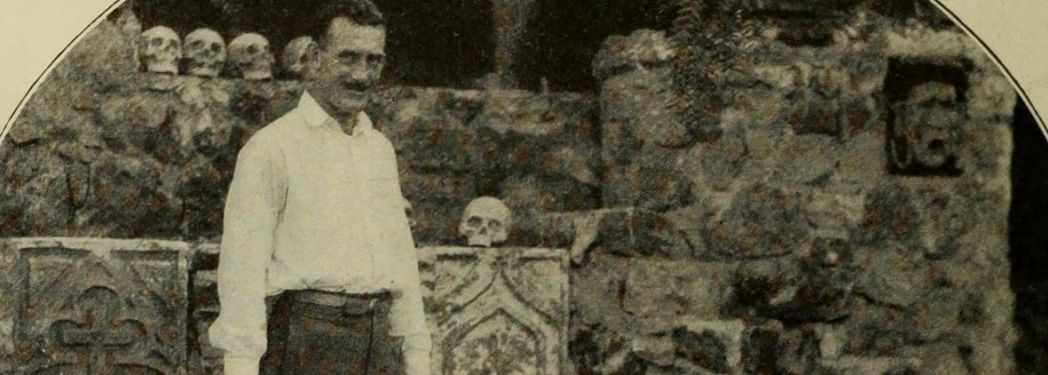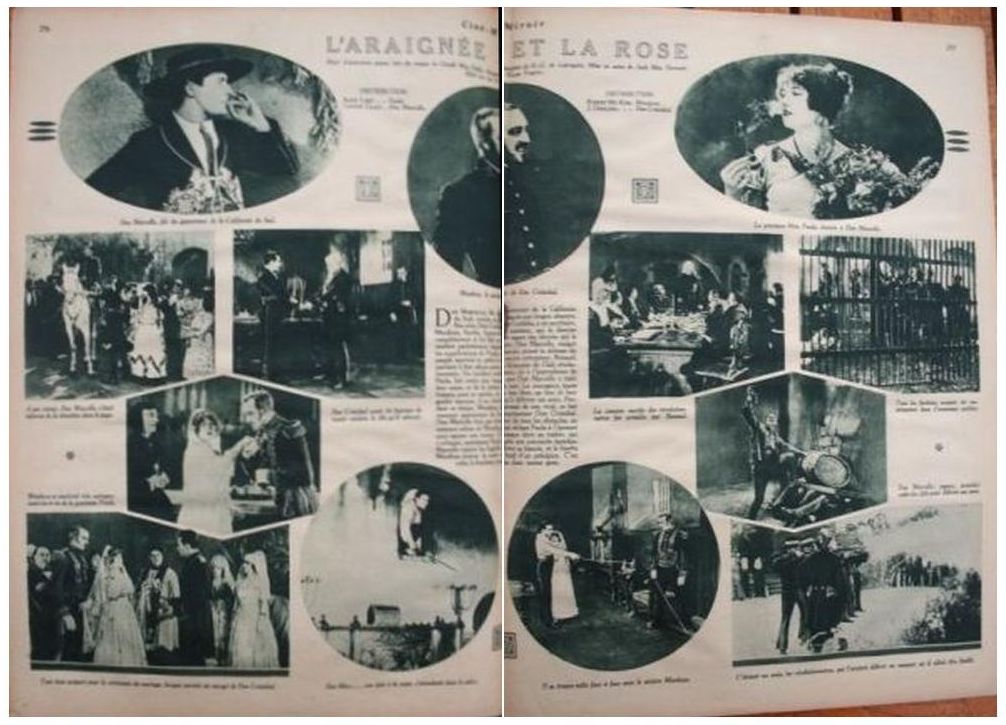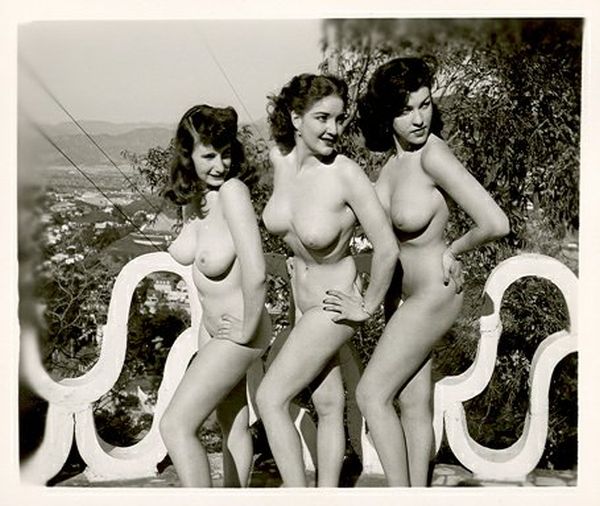NSFW: Vintage cheesecake photos!
For more cheesecake photo of Tura Satana, see my original post at technoknob here.
–
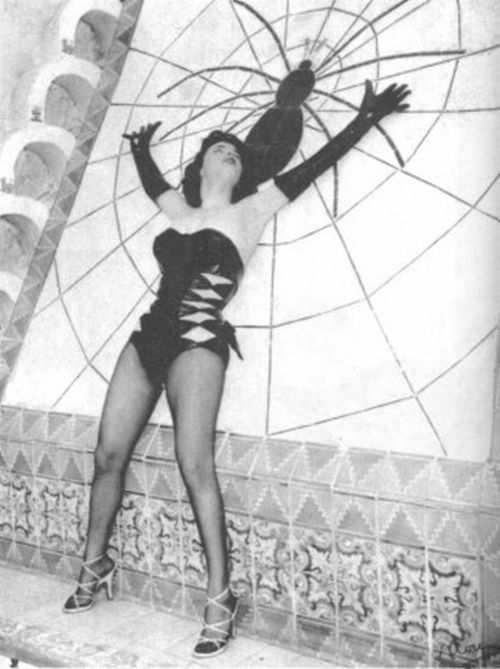 From Red Lemonade’s post on the Spiderpool.
From Red Lemonade’s post on the Spiderpool.
The history of the Spiderpool is the quintessential Hollywood story, a particularly American brand of fairy tale that begins with excess and eccentricity, wild parties and beautiful women. Like so many American dreams, it was over almost as soon as it began, and what was once celebrated became nothing more than crumbling remnants of exploitation, disappointment and lost dreams.
Writer-director John “Jack” McDermott came to Hollywood from Wyoming in 1915, and within a few months he found himself writing, directing and acting in dozens of silent films. After two whirlwind years he settled into directing full time and enjoyed moderate success. When directing gigs dried up in the mid-1920s, he paid the bills by writing and adapting screenplays, but even that didn’t last too long.
At the height of his brief fame, McDermott began work on his so-called “crazy house,” a multi-level cottage set atop a series of tunnels, and cobbled together with Italian and French tile samples and pilfered sets from movies such as Song of Love, Phantom of the Opera and Thief of Baghdad. This paean to the Roaring 20s hosted plenty of sexy Hollywood parties in its day, in part thanks to its odd nature and slightly isolated location way up in the hills of Hollywood — Vale Vista Trail, to be precise, not far from Mulholland Drive — as well as its unique outdoor pool. The street address for McDermott’s place no longer exists, however, as property lines, house numbers and street names have changed since then. Those hoping to find the pool from old articles will be disappointed.
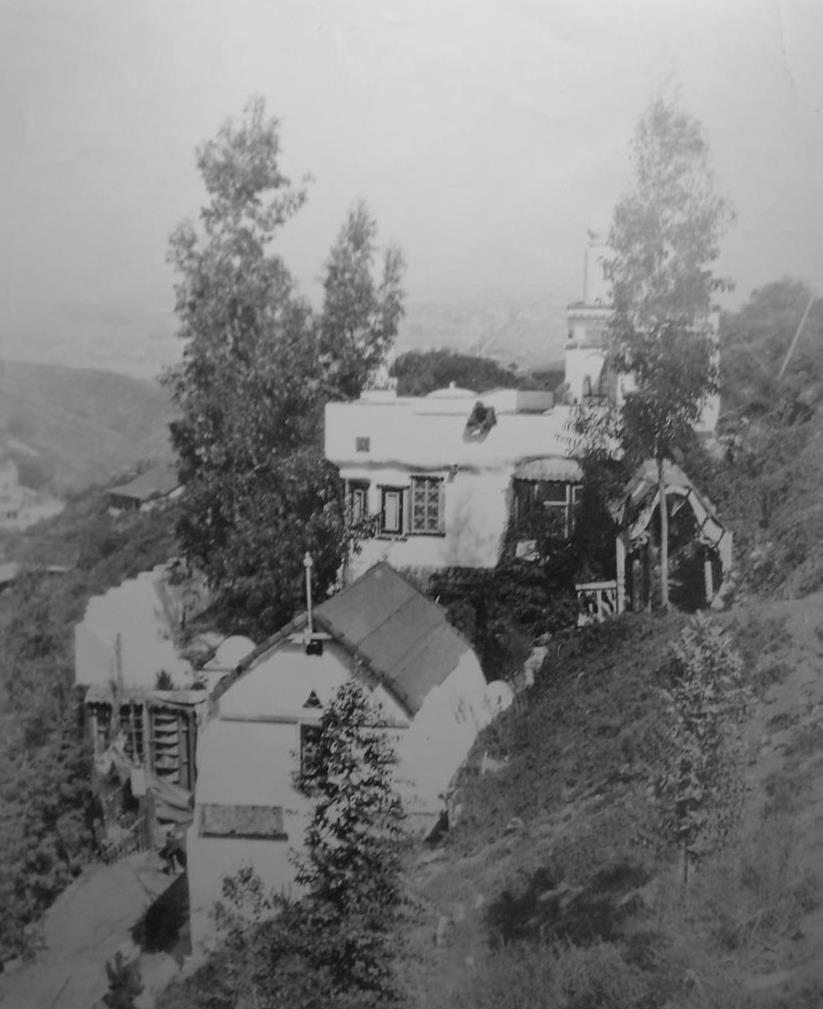 The exterior of the home, courtesy Cemetery Guide, which has a fascinating article on McDermott and the house. Well worth the read — and make sure to click on the links, they go to the absolute best pictures of the McDermott house available.
The exterior of the home, courtesy Cemetery Guide, which has a fascinating article on McDermott and the house. Well worth the read — and make sure to click on the links, they go to the absolute best pictures of the McDermott house available.
But reports of these parties always come with details that, at the time, may not have caused much alarm, but nowadays would raise quite a few eyebrows. One of the rooms in the “crazy house” was built upside down; that is, furniture was nailed to the ceiling, while light fixtures were on the floor. People were frequently goaded into getting drunk just so they could be left in this upside-down room, while McDermott would hide away, peeping through a secret hole, to see their astonishment as they awoke. There were tunnels and secret rooms and locks that only worked one way, and swimsuits provided for female guests — suits that dissolved once they hit the water.
And it wasn’t hard for McDermott to talk the women into taking a dip into the pool, an outlandish, colorful oasis located on a ridge near the “crazy house.” This pool area featured lots of gorgeous columns, a set or two of arches, a large round temple/hut, cement scallops, and a hodgepodge of beautiful tile surrounding what must have been a featured area: A large tile spider (with a little wasp on its side “caught” in the web) which adorned a waterfall that emptied into the pool. No one knows where the spider tile came from, but it has been speculated it was a set piece for The Spider and the Rose (1923), which McDermott directed.
However, The Spider and the Rose appears to be a costume drama set in 19th Century Spain, and of all the photos from the film that appear in this French movie magazine (above), none show a set where an elaborate spider tile design would fit in.
Above, a screen capture from a short subject titled “Hollywood the Unusual.” The house, which I previously erroneously identified as McDermott’s, is actually the “Witch House” in Beverly Hills, built in 1920 for the silent movie Hansel and Gretel and bought by producer Ward Lascelle. It’s featured in “Hollywood the Unusual” just as McDermott’s estate is, and footage is so haphazardly edited together that’s it’s difficult to tell where the Witch House ends and McDermott’s place begins.
Roughly two minutes in, the subject begins a tour of “The House That Jack Built” — a phrase still used today to describe McDermott’s estate. For several minutes, you see the exteriors of what appears to be areas of the McDermott buildings, all labeled with signs such as “Patio del Moro,” interspersed with other houses in Los Angeles. While the Spiderpool doesn’t make an appearance, at about 3:45 into the short, you can see a fountain with some of the tile that the Spiderpool is famous for; that fountain is seen in several cheesecake photos of the 1950s, and must have been located near the pool itself.
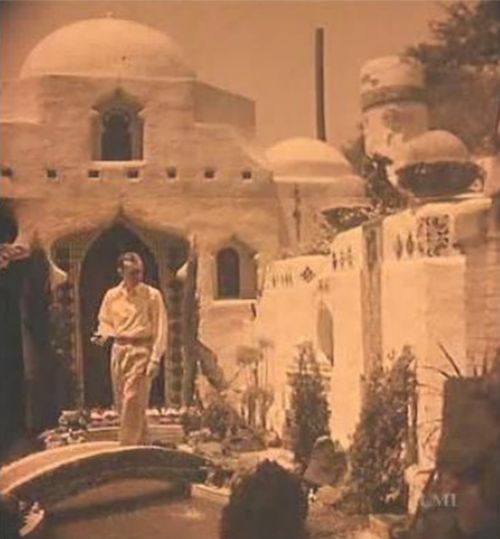 At a little over five minutes in, you can see McDermott walking over the fish pond, which urban explorers in 2004 said was still there. Above screen capture courtesy Doctor Zeus.
At a little over five minutes in, you can see McDermott walking over the fish pond, which urban explorers in 2004 said was still there. Above screen capture courtesy Doctor Zeus.
There is an associated 1950s cheesecake photo location thought to be near the Spiderpool because it contains some of the same tiles as the Spiderpool area does. If “Hollywood the Unusual” is any indication, that area might be what is titled the “Mexican Village,” which shows up about four minutes into the short and sports some very familiar-looking tile. Anyone interested in the Spiderpool or McDermott — or just Los Angeles architecture in general — should see “Hollywood the Unusual.”
The house was also featured in a few magazines and was the star of a host of parties and rumors well into the 1930s, but as McDermott’s career dried up, so did the guest list. McDermott died, some say from suicide, in the house in 1946. Afterward, the house was occupied by Jacques Jaccard, director and friend of McDermott’s, and possibly his companion of several years, until fire burned a section of the main building in 1947, at which point McDermott’s nephew took over the estate. The nephew never lived at the house but others did, mainly as caretakers.
In 1950, not long after McDermott died, the near-crumbling Spiderpool became a popular destination for photographers specializing in cheesecake and “artistic” nudes of women. Some saucy videos were shot inside the home as well. A 1950s-era video of two strippers showing off their tassels — it’s titled “Look At My Tassles” [sic] — is set in an area of McDermott’s house, and can be found online. Though this little one-minute short is decidedly PG rated, you must be willing to brave the world of XXX-rated porn if you want to see it for yourself.
According to these researchers, movies such as The Tattered Dress (1957) were shot at the Spiderpool and outside the McDermott home. Yours truly has seen the scenes in question and remains unconvinced they were shot at the Spiderpool, given the lack of tiles underneath the rock borders.
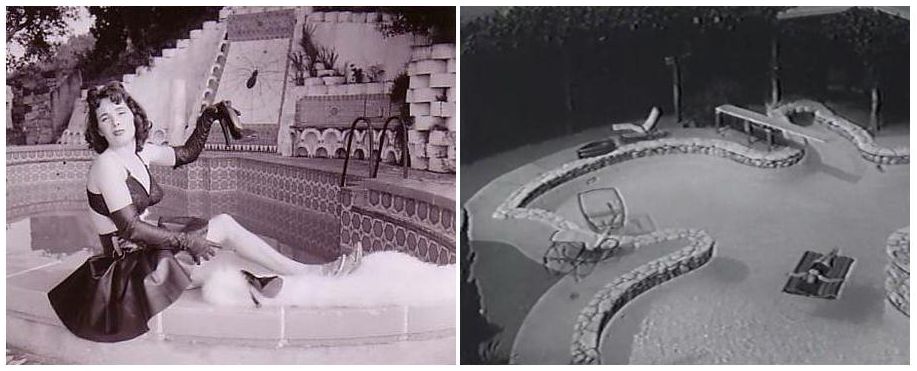 Vintage photo at the Spiderpool on the left; screen grab of an alleged scene shot at the Spiderpool in The Tattered Dress on the right. I believe Tattered Dress was actually shot at a Brentwood home owned and designed by architect Phillip Ilsley. While I can’t link to the posts because it’s members-only and I’m not a member, my memory says that members of the Spiderpool Research Group agree.
Vintage photo at the Spiderpool on the left; screen grab of an alleged scene shot at the Spiderpool in The Tattered Dress on the right. I believe Tattered Dress was actually shot at a Brentwood home owned and designed by architect Phillip Ilsley. While I can’t link to the posts because it’s members-only and I’m not a member, my memory says that members of the Spiderpool Research Group agree.
Silent movie star Harold Lloyd — who allegedly worked with McDermott, or at the very least must have known of the “crazy house” back when it was a Hollywood party place — was an avid cheesecake photographer in the 1950s, and also fascinated with the new technology of 3D photography. For decades, he took portraits of a host of models, including a young Marilyn Monroe and Betty Page.
This iconic photo of Tura Satana at the Spiderpool was taken by Lloyd, who used the estate on multiple photo shoots. There are about eight photos of Satana taken at the Spiderpool, though I’ve been unable to confirm if Lloyd took all of the photos of Satana at the Spiderpool, or even if they were all on the same day, but it’s assumed he did.
Lloyd was only one of many photographers who used the McDermott estate for their photos, and Tura Satana was only one of his models.[1] While his stereo photography was mentioned frequently, his nude photography was mostly unknown until after his death, due in part to the subject matter, as well as his series of “little flings” with some of the models.
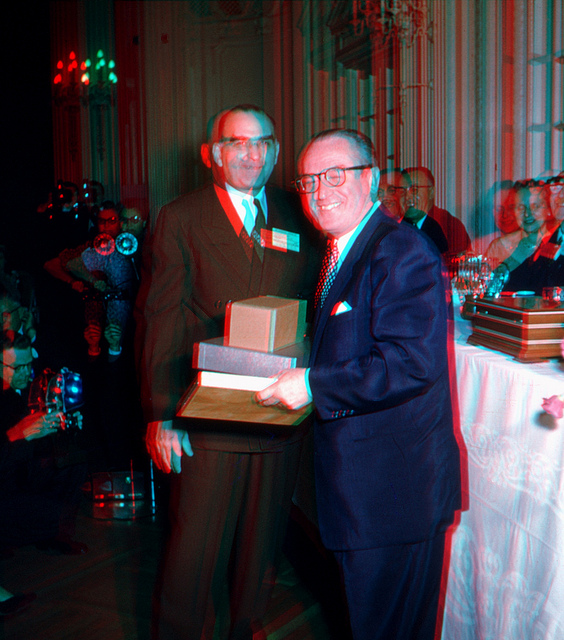 3D photo of Harold Lloyd in 1955, receiving the Stereo Realist Award. Photo from depthandtime.
3D photo of Harold Lloyd in 1955, receiving the Stereo Realist Award. Photo from depthandtime.
The property was owned at the time many of these cheesecake photos were taken by an engineer named Carl “Mac” Brainard, sometimes called “Max Brainard,” who worked in Hollywood special effects. He had always been a bit of a wunderkind, it seems; by age 23, Popular Mechanics was doing an entire spread on Brainard and his amazing inventions. Brainard became friends with Lou Costello, and developed some of his inventions for the comedian’s home. Brainard must have adored living in McDermott’s old house.
During the 1950s, the area was used so often that hundreds, perhaps thousands, of photos from the Spiderpool exist today, and dozens of videos as well. It wasn’t owned by Brainard the entire time, it seems, but by a variety of people. In 1958, a serious owner finally bought the place and intended to restore the home. The new owner, a Hollywood studio policeman, chased the vandals who had been frequenting the dilapidated home away, but before restoration could begin, the City of Los Angeles essentially condemned the place. Some of the buildings were torn down in 1958 and, as far as anyone knew, the remnants of the structure were demolished in about 1962, likely bulldozed into the pool area. The lots around the old McDermott land were divided in such a way that you could not get to the former McDermott estate without trespassing. What had once been a hot Hollywood party palace in the 1920s had become the site of vandalism, fire and death, the broken-down background in cheap nudie pics, and now was essentially lost to the world.
Yet vintage nude collectors had long noticed many photos from the 1950s by a variety of photographers were staged at the same strange, eccentric location. They started to ask about this location, which they eventually dubbed the Spiderpool. It wasn’t lost, per se, as people had occasionally trekked up to the location over the decades, just to walk around the ruins; author Kage Baker’s sister recalls that, as kids, they they lived near the former McDermott home and could even see some of the columns from their yard. But it was still so unknown that it might as well have been completely lost.
Still, collectors online recognized the columns, edging, California hills in the background and tile around the pool in dozens of photos, which made the place easily recognizable, even if the spider waterfall wasn’t visible in the photos. Deep Space Daguerrotype has a fascinating set of photos from the Spiderpool back when it was used for nudie pics, plus more recent photos from when it was located by explorers. Eventually, collectors pieced together the rough location from geographic clues in these old nudie pictures, and in 2004, a couple finally found the location: pictures and notes from finding it are here. Photographer Mark Lester got a nice view of the pool from a distance on November 9, 2004.
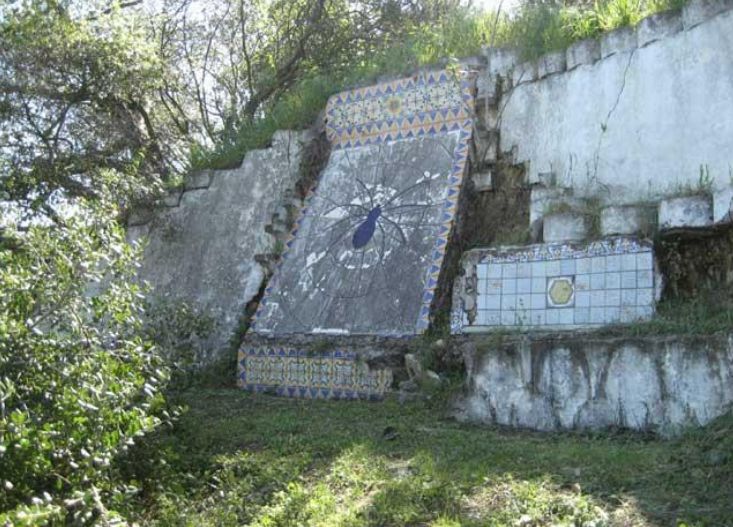 Photo from LAist, credited to Jacy Young, circa 2008.
Photo from LAist, credited to Jacy Young, circa 2008.
While the first urban explorers to the area in 2004 found the pool, they couldn’t find the location where the house had been. In 2008, someone found it and discovered that some of the house is (or, more likely, was) still standing. There are archive.org captures of a Wiki and history here, of the old Spiderpool blog (defunct since 2006) here, and discussion of the original finding here.
The status of the Spiderpool today is, to be blunt, crumbling. It’s not public land — you cannot get there without permission from one of the private owners whose property borders the old McDermott estate, and the land itself is possibly owned, possibly not, no one seems to know for sure. There was a rumor last year that the land was owned and being maintained, but the recent video tour by Dearly Departed shows ruins that, as of December 2014, weren’t maintained at all. A quick comparison of how it looks now versus the pool as it looked in 2004 when it was found shows that it has deteriorated rapidly.
What makes Jack McDermott and his crazy house so compelling is not necessarily the outrageous story — outrageous stories are a dime a dozen — but that, in this case, the outrageous story is true. A small-time actor, playwright, director and self-proclaimed genius that no one would have ever remembered otherwise accidentally ensured his legacy by stealing sets, knocking them together, and creating what can only be described as a booty bungalow. That those sets, tunnels, and minarets didn’t fall over and crush some young starlet is a minor miracle; that any of the place exists today, nearly a century after it was dreamed up by a probable madman, is a major one.
***
Sources
For ease of reading, I’ve included all my sources as links in the post. There are often multiple links for one source, so look closely! Hover over or click on the links near the information you’re interested in to see the sources used. I’ve done my best to make sure all links work, sometimes using archive.org links if necessary.
Edits
Major editing was done on this article on April 21, 2015, for a variety of reasons, primarily to add sources and new information. If you really want to see the original version of the post, I have a screengrab here. It’s huge. It’s also boring, but it’s there for reference if you want it.
More Cheesecake
This post originally appeared on my personal blog technoknob in July of 2010, and was moved here and revamped in February, 2015, with an update about the Witch House added in May, 2017. Most of the cheesecake photos of Tura Satana can be found at technoknob.
[1] There have been questions as to Tura Satana’s age in these photos, as the date they were taken is somewhat unsettled, and Satana’s age seems to be in question, too. After the original version of this post got a lot of attention on Satana’s passing in 2011, I did quite a bit of research to try to get definitive answers as to her age. There are definitive answers, but you will not find them here, primarily because the facts involve some things that her surviving family probably doesn’t want made public. That said, I felt the photos were appropriate to post here (and at technoknob, where most of the photos of Satana at the Spiderpool are) for a variety of reasons: (1) compelling sources such as the New York Times stating her birth year as 1935; (2) enough evidence to convince me the photos were taken in 1954; and (3) her own words in multiple interviews that she not only consented to these photos but pursued a career in modeling, and enjoyed the sessions with Lloyd and considered him the inspiration for her acting career. I’m convinced Satana was able to legally consent when these photos were taken, and that they were taken with her full and complete permission. I wouldn’t post them otherwise.
